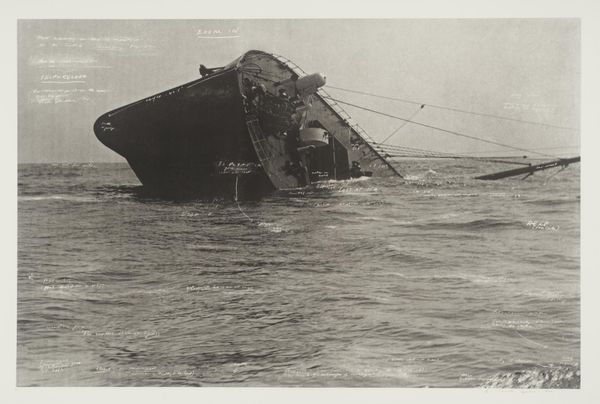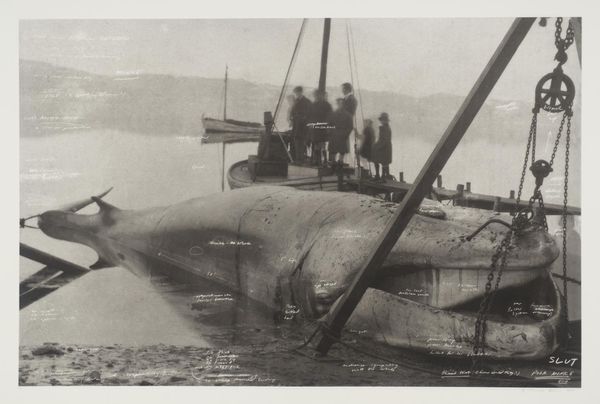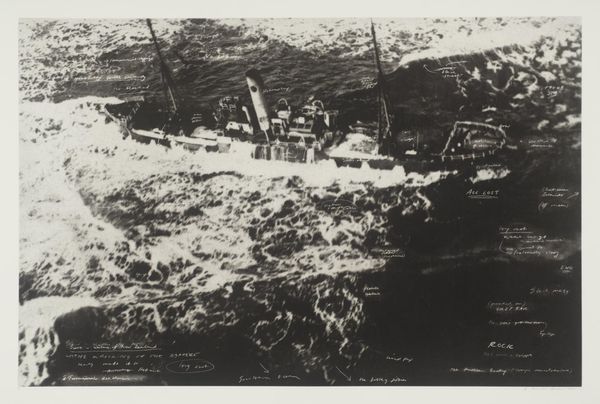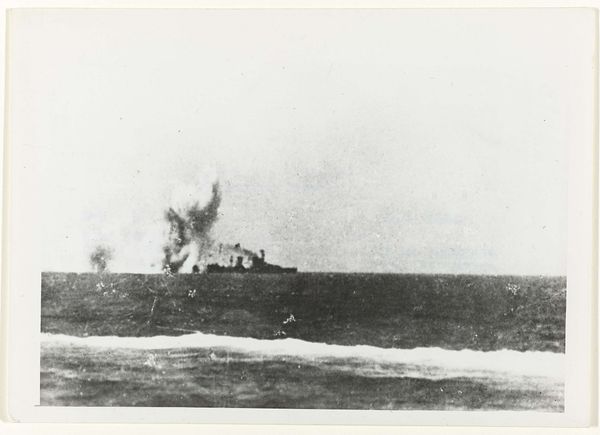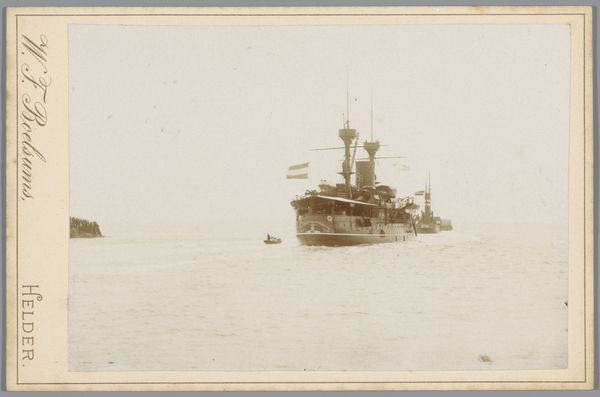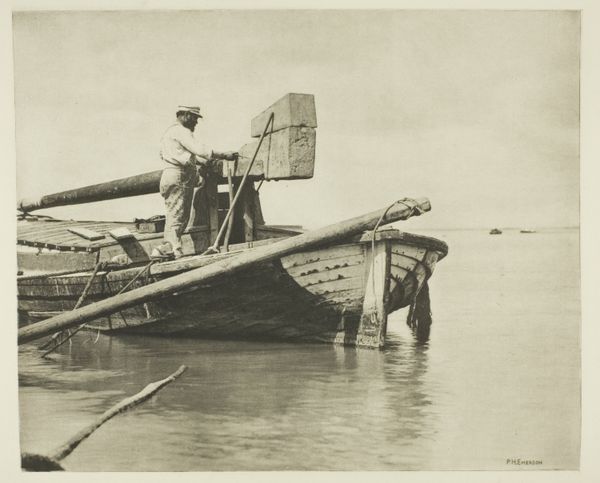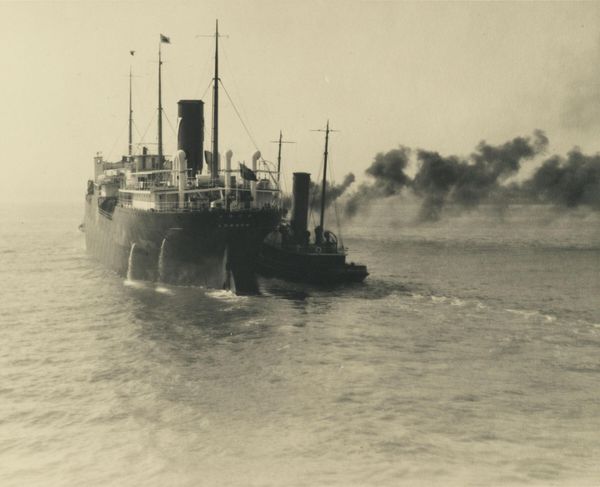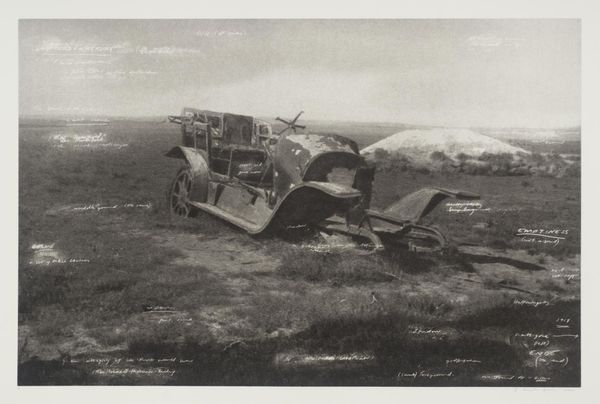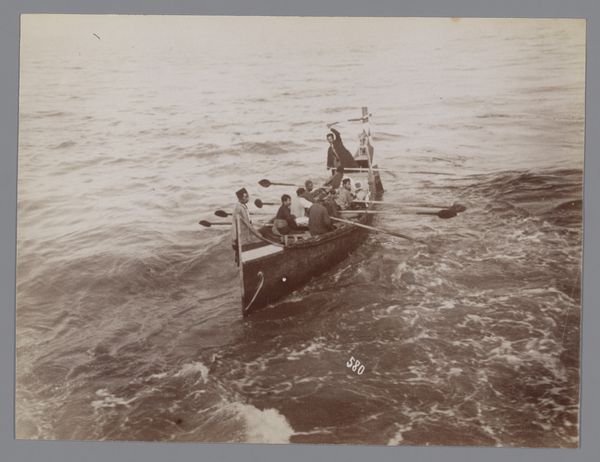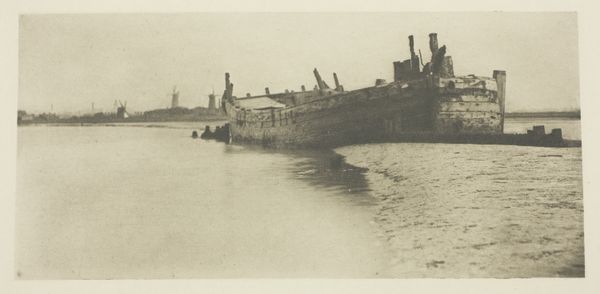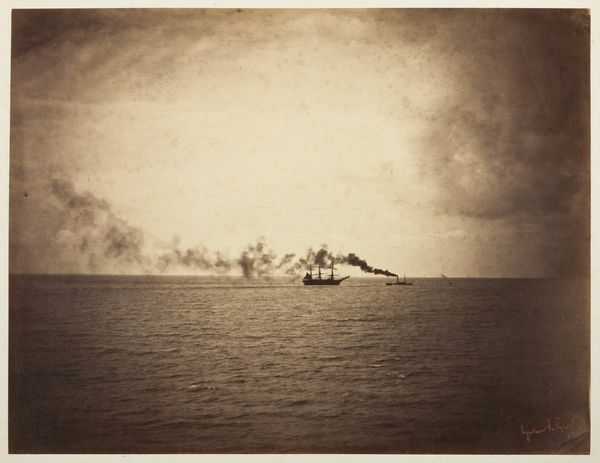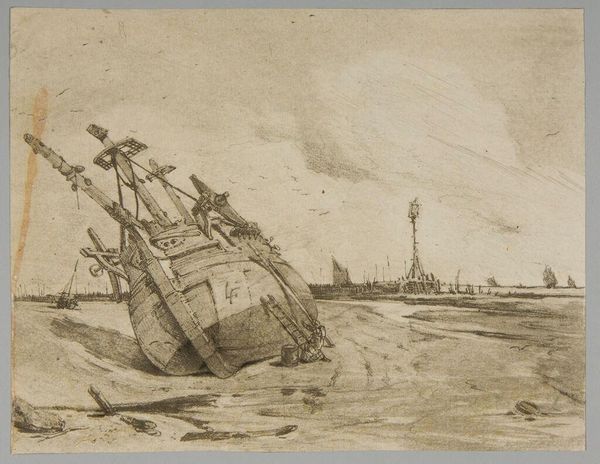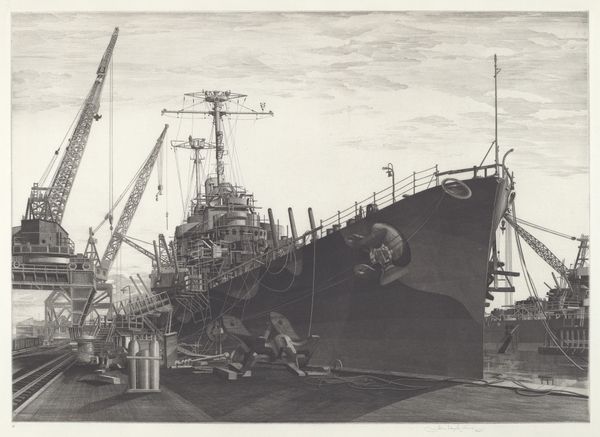
Dimensions: image: 450 x 685 mm support: 540 x 690 mm
Copyright: © Tacita Dean, courtesy Frith Street Gallery, London and Marian Goodman Gallery, New York/Paris | CC-BY-NC-ND 4.0 DEED, Photo: Tate
Editor: Tacita Dean's "So They Sank Her!" presents a somber image of a capsized vessel, almost like a haunting relic. What resonates with you most when you look at this work? Curator: The wreck, poised between disappearance and visibility, becomes a potent symbol. It speaks of hubris, of human endeavors undone by forces beyond control. Do you see how the figures atop the wreck seem almost ceremonial? Editor: Yes, they do appear almost like mourners or witnesses. Is there a particular historical event that this image evokes? Curator: Perhaps not a specific event, but more a collective memory of maritime disasters. Wrecks, you see, often become charged sites, repositories of lost lives, broken dreams, and cautionary tales about our relationship with nature and technology. The title itself, "So They Sank Her!" has a strange ring of inevitability and perhaps even blame. Editor: I hadn't considered the aspect of blame. It's fascinating how a single image can hold so many layers of meaning. Curator: Indeed. It’s a reminder that images are never just representations; they are vessels carrying cultural and emotional weight.
Comments
Join the conversation
Join millions of artists and users on Artera today and experience the ultimate creative platform.
tate 6 months ago
⋮
So They Sank Her! belongs to a portfolio of twenty black and white photogravures with etching collectively entitled The Russian Ending. The portfolio was printed by Niels Borch Jensen, Copenhagen and published by Peter Blum Editions, New York in an edition of thirty-five; Tate’s copy is the fifth of ten artist’s proofs. Each image in the portfolio is derived from a postcard collected by the artist in her visits to European flea markets. Most of the images depict accidents and disasters, both man-made and natural. Superimposed on each image are white handwritten notes in the style of film directions with instructions for lighting, sound and camera movements, suggesting that the each picture is the working note for a film. The title of the series is taken from a convention in the early years of the Danish film industry when each film was produced in two versions, one with a happy ending for the American market, the other with a tragic ending for Russian audiences. Dean’s interventions encourage viewers to formulate narratives leading up to the tragic denouements in the prints, engaging and implicating the audience in the creative process.
